#spectrum holobyte
Explore tagged Tumblr posts
Text

USA 1993
#USA1993#SPECTRUM HOLOBYTE#SPHERE INC.#ARMENICA INC.#PUZZLE#ACTION#IBM#MACINTOSH#AMIGA#SNES#GAMEBOY#WORDTRIS#SUPER TETRIS#TETRIS CLASSIC
34 notes
·
View notes
Text

Star Trek: The Next Generation - A Final Unity. Spectrum Holobyte - 1995.
#star trek#the next generation#tng#pc#cd-rom#adventure#point and click#gene roddenberry#spectrum holobyte#jean-luc picard#will riker#data#worf#geordi la forge#deanna troi#beverly crusher#enterprise-d#90s
8 notes
·
View notes
Text
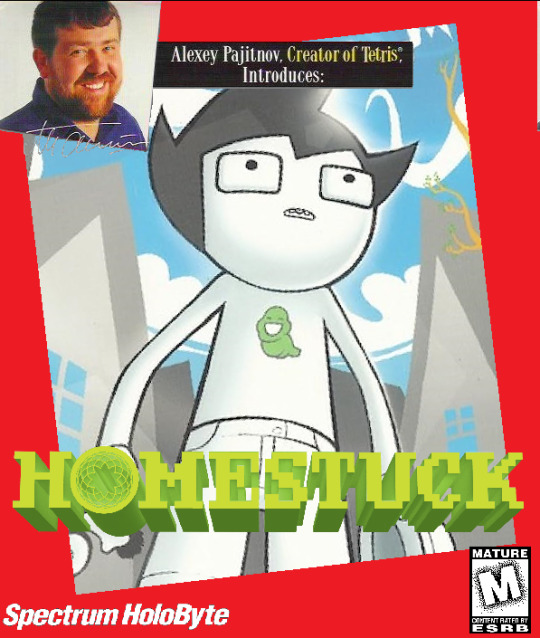
finally, the creator of tetris released a new game! i cant wait to play it after i finish my game of qwirks!
#homestuck#shitpost#alexey pajitnov#john egbert#spectrum holobyte#i dont know who made that homestuck john in the suburbs art#probably andrew hussie#i just yoinked it off of google#also i am horrible at cropping out images from other images#i dont use photoshop tho#i use paintnet#woops!
2 notes
·
View notes
Video
youtube
Back Cover to AI Art S2E2 - Falcon
Older video games were notorious for back cover descriptions that have nothing to do with the game so let's see what a text-to-image generator makes of these descriptions.
Season 2 sees an increase in art creations for each game, up from 1 in the first season to 6 for the second season.
1. Intro - 00:00
2. Back Cover and Text Description - 00:10
3. Creation 1 - 00:30
4. Creation 2 - 00:50
5. Creation 3 - 01:10
6. Creation 4 - 01:30
7. Creation 5 - 01:50
8. Creation 6 - 02:10
9. Outro – 02:30
Developed by Sphere and Spectrum Holobyte, Falcon is a first-person flight combat simulation and a part of the Falcon series of flight sim games from the late 80s to the mid-90s.
Falcon was released across multiple platforms following its initial 1987 release on DOS and Mac. Atari ST, PC-98, Amiga and CD-TV would follow.
For more Back Cover to AI Art videos check out these playlists
Season 1 of Back Cover to AI Art
https://www.youtube.com/playlist?list=PLFJOZYl1h1CGhd82prEQGWAVxY3wuQlx3
Season 2 of Back Cover to AI Art
https://www.youtube.com/playlist?list=PLFJOZYl1h1CEdLNgql_n-7b20wZwo_yAD
#youtube#ai art#ai generated#ai artworks#falcon#80s games#80s gaming#video games#ms dos#mac#sphere#spectrum holobyte#first person#first person flight combat sim#art#digital art#machine learning#artificial intelligence
1 note
·
View note
Text
Sega Saturn - Break Thru!
Title: Break Thru! / ブレイクスルー
Developer: Spectrum Holobyte / ZOO Corporation
Publisher: Shoeisha / BMG Victor
Release date: 22 September 1995
Catalogue No.: T-21501G
Genre: Puzzle
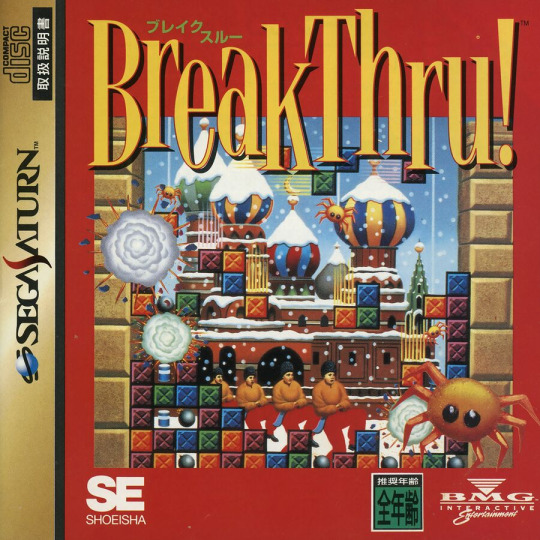

Most stuff released in Japan under SE Shoeisha is either complete crap or very cheap. Break Thru! falls into the very cheap section which is no surprise when you consider Zoo Corporation made it. However cheap doesn't mean bad. What we have here is a pretty simple yet addictive puzzle game that requires you to remove blocks from a wall to line up a set of 4 or more of the same-colored blocks. It may not be as addictive as Tetris (although you can see that SE Shoeisha is trying to push that Tetris image with all the Russian stuff around) but still worth picking up.
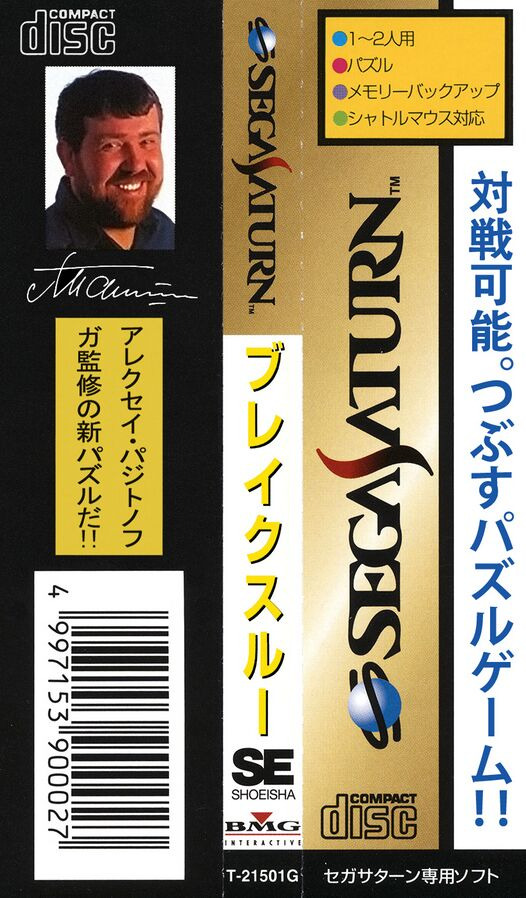
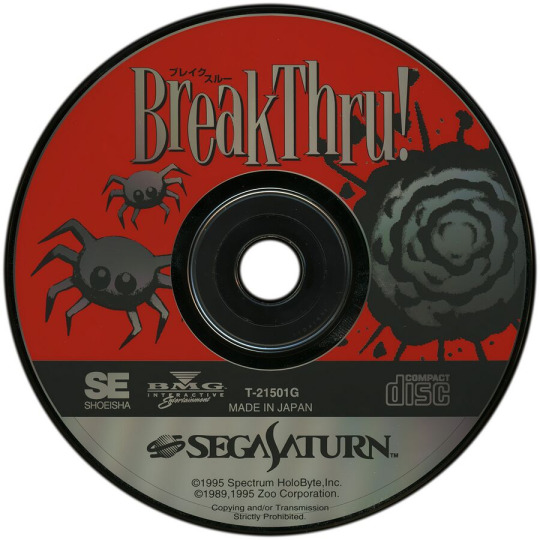
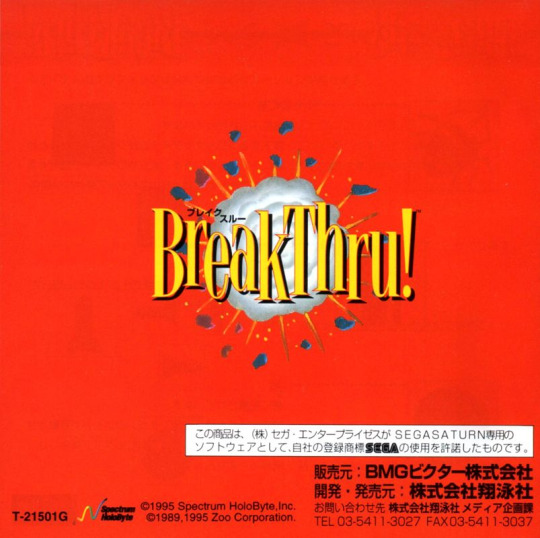
youtube
2 notes
·
View notes
Text
Henk Roger in Chile
Henk Roger (actual CEO with Axeley Pajitnov of The Tetris Company), is a Game Programmer, Game Designer, various games, and Chief Executive of game companies, he arrived in Chile for Festigame 2023 on the 12 and 13 of August! I went on Saturday and I got to know him, he could sign me some Bullet Proof Software (best known as B.P.S too) games.
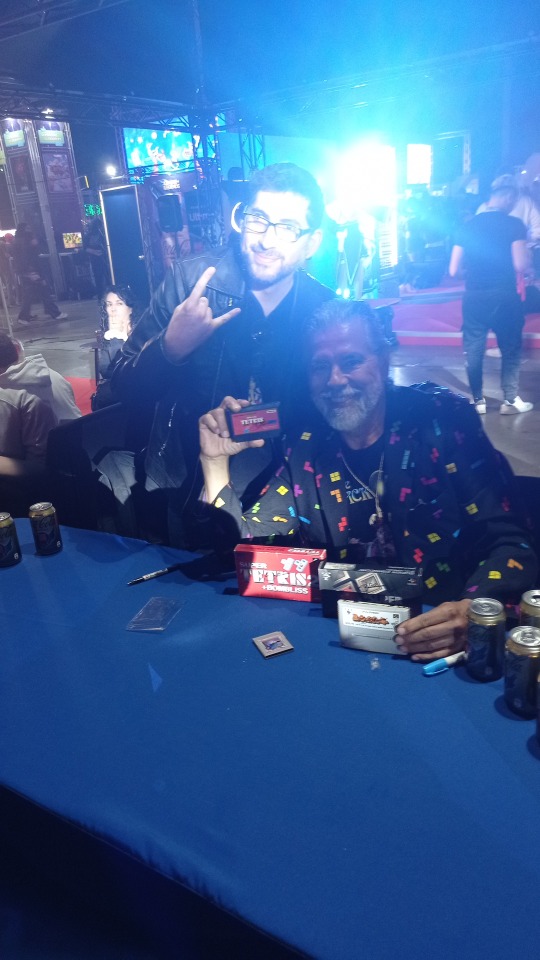
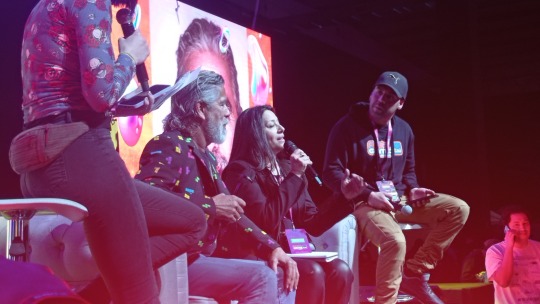

Was so fantastic his interview on the main stage of FestiGames. I will tell you the trajectory of Henk Roger before and later of Tetris.
The Birth of Bullet Proof Software
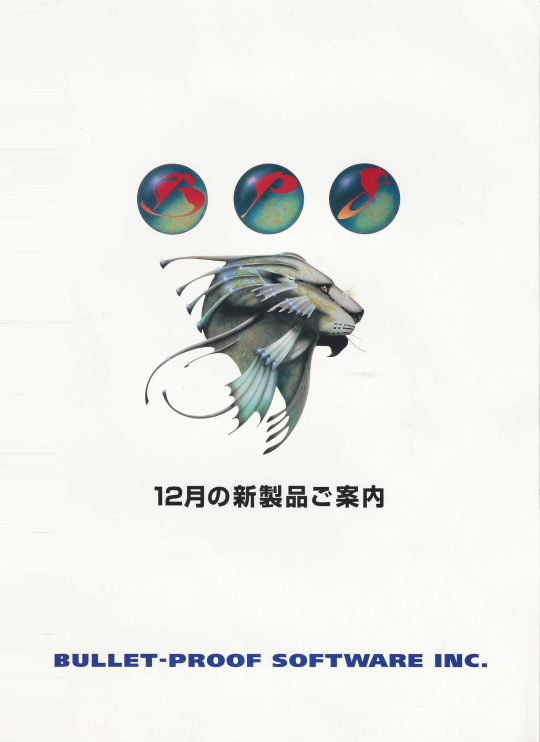
Bullet Proof Software (known as B.P.S) was an American/Japanese game Developer and Publisher founded by Henk Roger in 1983 in Japan. In the next year, the first game developed by B.P.S was Black Onyx, which was the first introduction of the RPG (Role Playing Game)/ Dungeon Crawler genre for the gamer Japanese before they developed games such as Dragon Quest (Enix), YS (Nihon Falcom) or Final Fantasy (Squaresoft).
Black Onyx had Inspiration from successful American RPGs like Ultima by Richard Garriot in 1981, and Wizardry by Andrew C. Greenberg and Robert Woodhead in 1981, obviously, those games are based on Dungeon & Dragon (a tabletop game created in 1974 by David Gygax and Dave Anderson), the original mother of all Rol Playing games.
Its development was for NEC-PC 88, NEC-PC 98, SEGA-1000 and, and had a sequel for Famicom called Super Black Onyx.

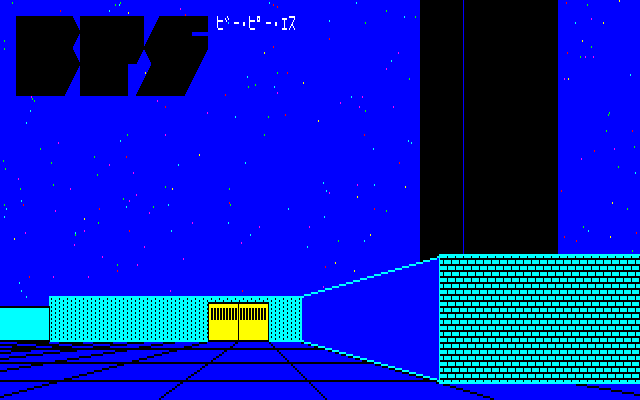

"Black Onyx for NEC PC 88 (hardware Japanese of 8 bits)"

"The Original Team of B.P.S during the development of Black Onyx in 1984"
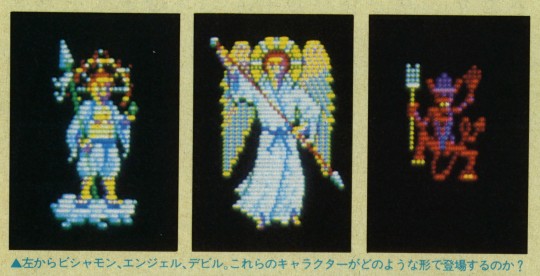

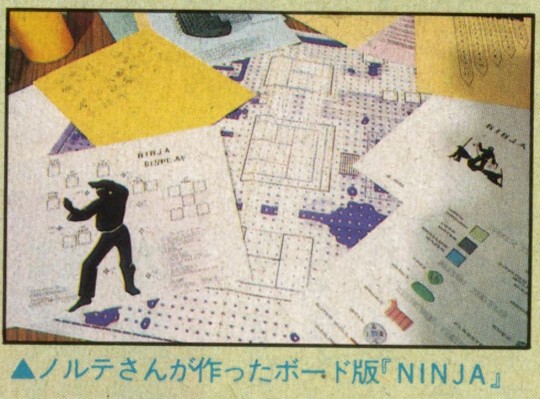
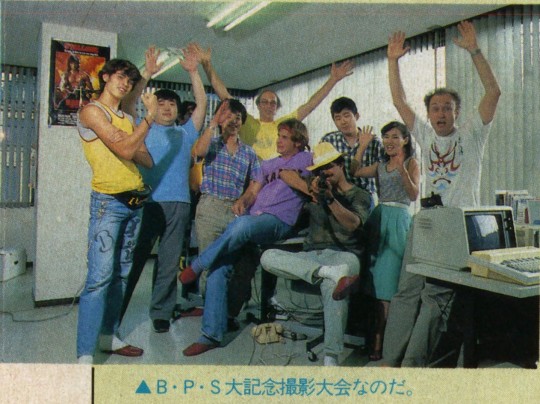
"Bullet Proof Software Office in 1984, the screenshots are of a Japanese Magazine called Beep! about videogame, 1984 which they worked on in Black Onyx's Third chapter, showed GDD and Sprite Editor that was unreleased". (source by VGDenetsu)
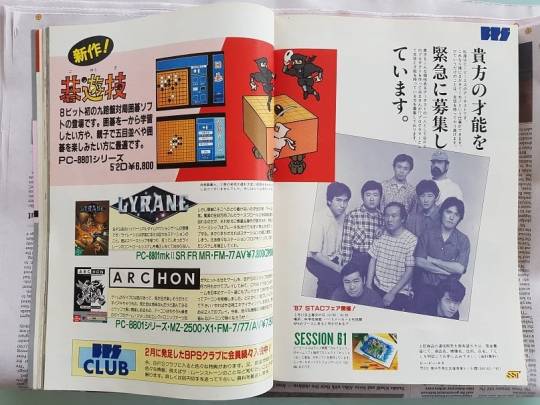

B.P.S Club Ad, show the next game for PC 88 and Famicom like: -MicroGo1 (1987 developed by B.P.S for Famicom) is a Go game -Archon (they were the publisher for the PC 88/FM 77 version in 1986) -Lyrane (they were the publisher for the PC 88/FM 77 version in 1986 and 1987)
Tetris, From Russia with Love:
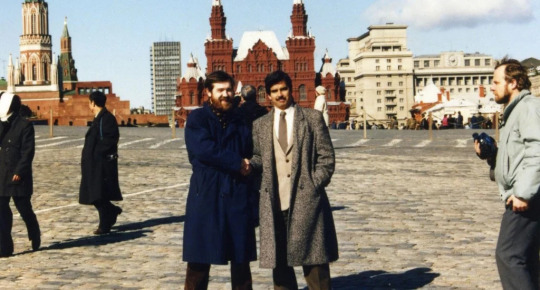
I suggest you check the great documental: "From Russian with Love" created by BBC, but I will try to resume the story: Axeley Pajitnov's 1985 program Tetris his Electronika 60 in the Science Sovietic Academy of Moscu during the URRS, his creation did not have the proprietary right concept, the game was spread all over Europe. The game quickly arrived on different PCs until you reached a Computation Exposition in Europe. A man called Robert Stein from Andromeda Software was interested in Tetris, and he wanted to contact Axeley Pajitnov, but the Soviet government was awarded the game to negotiate with any wanted of getting the rights of commercialization for selling Tetris via Elorg, Ministry of Technology of the government.
Elorg sent the first step for negotiating to Robert Stein, but him believed that was a contract for the right of commercialization, he started selling the rights commercialization to Mirror Soft (a British Company created by the Multibilionaire Robert Maxwell), This company sold the rights to Spectrum Holobyte (game developer and Publisher in the USA) that this sold the rights to Atari Tengen (for Arcade and Console) and finally Atari Tengen sold the rights to Henk Roger from Bullet Proof Software for can sell Tetris for Famicom, during a CES of 1987.
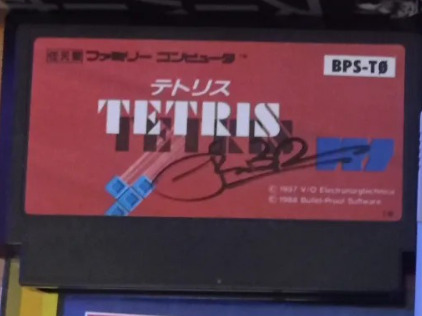
"This was the first version of Tetris for Famicom released in 1987, that didn't same NES version released in 1989 was developed by Nintendo Japan". But Elorg didn´t know about the commercialization of Tetris in anything platform until 1988, when they saw the different Tetris versions on PC. Elorg contacted Robert Stein because he traded the rights without Elorg's permission., while Mirror Soft at the same time they wanted the rights to Tetris, and Henk Roger was contacted by Hiroshi Yamauchi because Nintendo they worked on a new Console Portable: Game Boy. Henk Roger, Robert Stein, and Kevin Maxwell made a trip to URRS, to negotiate the complete rights of Tetris, without knowing each one traveled with the same intention, was a legal fight and very bureaucratic, and this scaled to the KGB, Kremlin, and finally to the Mijain Gorbachov, but Henk Roger got the exclusive rights for develop and sell the game for Game Boy and VideoGame Home Console. With the rights to the Video Game Home Console, They can stop and cancel the version of Atari Tengen for NES, obviously, Atari demanded Nintendo in a Legal Trial for the rights to sell the Home Console (at this moment ATARI made a re-engineer inverse to the NES for manufacture own NES Cartridge without permission of Nintendo they had another legal trial).

In 1989, Tetris was sold with the release of the Game Boy, which was developed by Bullet Proof Sofware, It was a success for Nintendo and BPS, but Axeley Pajitnov at all times earned nothing from the profits of his creation, Elorg and URRS kept the profits until 1996 when Russia change to the capitalist system and rights of creation were delivered for his creator.
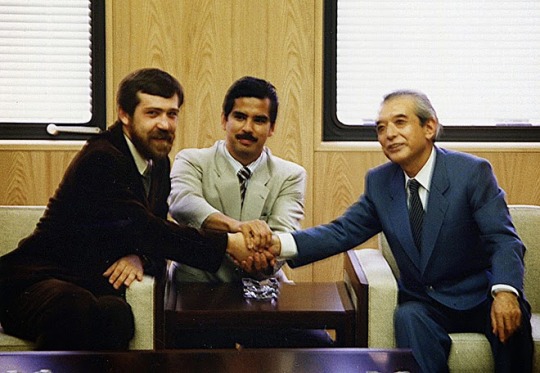
Axeley Pajitnov, Henk Roger and Hiroshi Yamauchi (President of Nintendo Kyoto in 1989)
Testris and the Friendship:
Axeley Pajitnov wanted to work as a Game designer and work in the game industry, and his best friend could help. Bullet Proof Software since 1989, opened a filial of development in Redmond Washington (very near the Nintendo of America office), Axeley Pajitnov could exit to the URRS, and traveled to the United States with his family. His first work in B.P.S was: - WellTris - FaceTris - HaTris - Knight Moves - PipeDream ( based on the PC game of Lucas Film Game) - Yoshi Cookies (based on an unreleased arcade game of HomeData) Later Pajitnov worked at Microsoft and in 1996 he founded with Henk Roger, The Tetris Company.
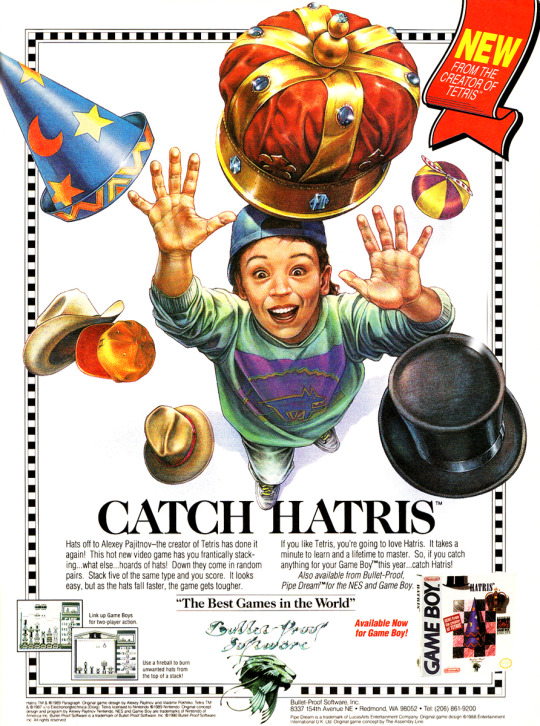

"Hatris and PipeDream was the next game designed by Axeley Pajitnov after Tetris, Facetris & Welltris"

"An article from 1990 by GamePro Magazine (Review of Hatris & Pipe Dreams Puzzle Games for Game Boy)"

"Club Nintendo Magazine, CES of 1993"


"Ads of some Game of Bullet Proof Software".
2 notes
·
View notes
Text
'Tetris Forever' Steam Deck Review

Okay, this is a little bit late. Kind of embarrassing, really. But the holiday season got the best of me and a few reviews fell by the wayside as a result. The folks handling Digital Eclipse's PR shot me over a Steam review code for Tetris Forever around launch, and here we are. The good news is that this allows me to consider the current version of the game, which has received one fairly substantial patch since the initial release. Let's have a look at this latest release in Digital Eclipse's Gold Master Series.
The first thing I'll say is that if you're a hardcore Tetris fan, you really need to own this. It's a solid celebration of the game and its legacy, and while it doesn't have every single thing you might want it to, there's more than enough here to justify picking it up. Fans of gaming history should also grab it, as Digital Eclipse's usual flair for this kind of thing is on full display. Lots of historical materials, tons of video content, and all the context needed to appreciate each step of Tetris's journey. The documentary side really goes above and beyond, somehow even securing the necessary permissions from Nintendo to include a lot of things you wouldn't expect to see in a multiplatform collection.

Unfortunately that does not extend to the actual games Nintendo has some ownership in. Tetris Forever can talk about GB Tetris, NES Tetris, and other Nintendo-published Tetris games. It can show them. But it can't let you play them, so do keep that in mind. Most of what is here games-wise are the titles fully owned by Bullet Proof Software and/or The Tetris Company, with a couple of extras from Spectrum Holobyte's offerings. If you have a favorite version of Tetris, the odds are good that it isn't included here. Not much to be done about it. Still, if you can get past that, there is a very interesting collection of titles here. And as ever, the documentary side of things stands on its own. Even if you don't like the games, it's worth picking up just to comb through all of that.
Okay, let's talk about the games now. Quick hits, one by one, from oldest to newest.
Tetris (Electronika 60) - Technically a re-creation of the original Tetris rather than an emulation. Probably not going to be your go-to version to play, but it's interesting to see just how fully-formed the game was this early on. Playable in Russian or English, and in monochrome or a more accurate green and black.
Tetris (MS-DOS, AcademySoft) - Vadim Gerasimov's MS-DOS port of Alexey Pajitnov's Pascal code adds color graphics to the original version along with a few other bells and whistles. Another step on the journey, but one you would mainly play just to see how things progressed.
Igo: Kyuu Roban Taikyoku (Famicom) - Okay, so this release also serves somewhat as a telling of the history of Bullet Proof Software, and this Famicom take on Go is certainly an important part of it. Not an ideal way to play Go in the modern year, and if you don't already know what you're meant to do you'll likely struggle. Still an interesting inclusion.

Tetris (MS-DOS/Apple II, Spectrum Holobyte) - Two early commercially-released computer versions of Tetris, and again they are mainly interesting as historical curios. Still, there's a good chance one of these was the first Tetris some of you played. The MS-DOS version was how Tetris was first introduced to the American market.
Tetris (Famicom) - It's Tetris for Nintendo's 8-bit console, but probably not the one you know! The controls are completely bonkers, but you can remap them if you like. Once you do, it's a decent enough if low-frills version of Tetris. Oddly, this is the first version of the game where you earn points for clearing lines. Up until this point, your score was fully based dropping pieces quickly.
Welltris (MS-DOS) - Pajitnov was beaten to the "3D Tetris" punch by Blockout, but his take on the idea is arguably more interesting. It's like playing Tetris down four different boards that all feed into a common area. This was the first follow-up to Tetris developed by Pajitnov. This was added to Tetris Forever after its release via an update, and I'm glad it was. These variants are a fascinating part of the story, after all.

Hatris (Famicom, Game Boy, NES) - Another Pajitnov variant, Hatris is here in three different forms. In an unusual case, the Famicom and NES versions are quite distinct from one another. Stack and sort the various hats to make them disappear. Some hats are small, some hats are big. Tricky to be sure, but it doesn't quite work over the long haul. Still, its inclusion here adds some welcome variety to the selection.
Tetris 2 + Bombliss (Famicom) - A Chunsoft-developed follow-up to Tetris that includes a more refined take on the original game with a few different modes of play, plus the Tetris Blast/Bombliss variant of the game. The Dragon Quest composer did the music for this one, so it sounds like you're going through a Dragon Quest dungeon while you're playing. Not bad.
Super Tetris 2 + Bombliss (Super Famicom) - The aforementioned, but… Super! Fancier graphics, and frankly more suitable audio. Otherwise, you get the same modes and options as the Famicom version. Again, not bad.

Tetris Battle Gaiden (Super Famicom) - An attempt to Puyo Puyo Tetris, long before the actual Puyo Puyo Tetris. It's focused on versus play and features a cast of cute and colorful characters. Each character has their own special move you can use to attack the opponent. Like other games in the set that didn't release in English regions, there's no translation here. Unlike the others, one would actually be useful here. Still a very fun game.
Super Tetris 2 + Bombliss Genteiban (Super Famicom) - A special limited release of Super Tetris 2 + Bombliss that features some new Bombliss puzzles. Otherwise it's the same game as the other one.
Super Tetris 3 (Super Famicom) - As far as retro Tetris games go, this is as refined as you're going to get here. There are four modes of play, including a four-player mode. You can play normal Tetris, or dive into the very quirky other two variations. It's a good enough Tetris.

Super Bombliss (Game Boy, Super Famicom) - Two different versions of a standalone Bombliss. There are three different modes to play. The Super Famicom version is fancier and has more modes, but you can have a nice time with either. Bombliss is an enjoyable variation on Tetris, and it's worth giving a shot to if you haven't played it before.
Super Bombliss DX (Game Boy Color) - At first you might take this as a colorized version of the original Game Boy Super Bombliss, but it crucially adds in the puzzle mode that was missing from the original release. A very good take on Bombliss.
Tetris Time Warp (Original) - A freshly-made version of Tetris put together by Digital Eclipse. The Time Warp Score Attack Mode swaps between different Tetris eras for extra scoring opportunities, which is interesting. You can also do a three-minute Caravan-style take on this as well. You can also play a Modern or "1989" Marathon without any Time Warps. The 1989 Marathon attempts to imitate the Game Boy Tetris, which is pretty much the best Digital Eclipse could do to fill that need. It's a decent Tetris, even if the Time Warp is a bit gimmicky.

That's the lot. Really, if you focus on what is here rather than what isn't, it's a really nice selection of games. They work both in service of the documentary, showing the progress of Tetris and Bullet Proof Software during those formative years, and as an assortment of fun Tetris games to play. Overall, Tetris Forever is a very good package, and if you've enjoyed similar efforts from Digital Eclipse you won't be unhappy with this.
Steam Deck Score: 4/5
0 notes
Link
Check out this listing I just added to my Poshmark closet: PT 109 Torpedo Boat Simulation 5.25" Floppy Disk Version CIB IBM PC vintage game.
0 notes
Text
Tinhead
Developer: Micropose Publisher: Spectrum Holobyte Release: 10/94 Genre: Platformer As the mascot platformers raged on to the end of the 16-bit generation developers would finally “get” it. The realization that it takes more than a cute face and some floating platforms to grab the attention of gamers would lead to some cool characters like Earthworm Jim, Sparkster, and even underrated…

View On WordPress
0 notes
Text

USA 1993
29 notes
·
View notes
Text
Star Trek: A World For All Seasons (3DO)
November saw us take a look at Star Trek: A World For All Seasons - an exciting interactive #3DO adventure game set for release back in 1994 by Spectrum HoloByte. After impressive looking previews, the game disappeared - likely cancelled due to platform decline. #StarTrek



0 notes
Text
Tetris for the Electronika 60 and IBM PC? Yes.
Mirrorsoft/spectrum holobyte versions? Probably?
Anything onwards (Nintendo, Sega, Tetris Company, etc)? No.
805 notes
·
View notes
Text
Super Famicom - Star Trek The Next Generation: Future's Past
Title: Star Trek The Next Generation: Future's Past / 新スタートレック 大いなる遺産IFDの謎を追え
Developer: Spectrum Holobyte / Axes Art Amuse / Realtime Associates
Publisher: Tokuma Shoten
Release date: 17 September 1995
Catalogue Code: SHVC-XN-JPN
Genre: Simulation


Judging by the screenshots at the back of the box this game seems to play a lot like Space Battleship Yamato on the PC Engine Super CD. As commander-in-chief of the entire Star Trek universe, you're granted control of almost every conceivable option on the Enterprise, from mixing it up with Romulans to reading a computer essay on warp-field operations. Compared to, say, Starfleet Academy Starship Bridge Simulator, there's more interaction with the characters both on and off the ship. Every aspect of ship operation is in your control, yet taking the landing party down for missions gets boring. The graphics and cinemas would be better if they weren't so pixelated. The storyline is very cool with tons of missions and fans of the show, like me, will find it interesting. This Japanese Super Famicom version does contain translated Japanese text and is published by the same company that made those Hatsukoi Monogatari games.
youtube
6 notes
·
View notes
Photo

'Another Soviet Challenge of New Dimensions'
Advertisement for Welltris, a puzzle game designed by Alexey Pajitnov, who developed the widely-popular Tetris (1989).
Those interested in the game may find it here.
#vintage advertisement#1980s#welltris#Alexey Pajitnov#video game#computer game#puzzle#spectrum holobyte
35 notes
·
View notes
Text
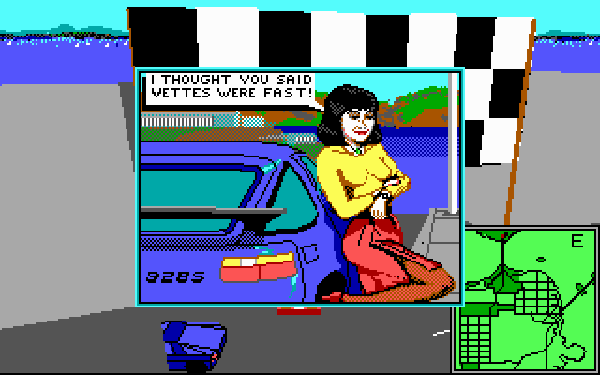
Vette! (DOS), 1989.
#abandonware#gaming#video games#retro games#80s#corvette#vaporwave#retrowave#aesthetic#pixel art#spectrum holobyte#sphere inc
41 notes
·
View notes